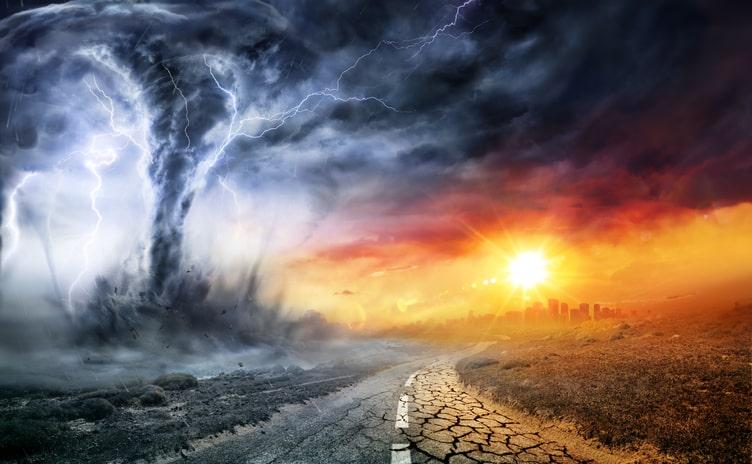Introduction
Disasters are natural or human-made events that can cause significant damage to people, property, and the environment. While they can be devastating, understanding the causes, impacts, and the importance of preparedness is crucial for minimizing their effects and ensuring community resilience. In this article, we will delve into the various types of disasters, their causes, and the measures individuals and communities can take to mitigate their consequences.
Types of Disasters
1. Natural Disasters:
a. Earthquakes: Sudden shaking of the Earth’s surface due to the movement of tectonic plates.
b. Hurricanes, Typhoons, and Cyclones: Violent tropical storms characterized by strong winds and heavy rainfall.
c. Floods: Overflow of water onto normally dry land, often caused by heavy rainfall or the melting of snow.
d. Tornadoes: Violently rotating columns of air extending from thunderstorms to the ground.
e. Wildfires: Uncontrolled fires that spread rapidly through forests or grasslands.
f. Tsunamis: Large ocean waves triggered by underwater earthquakes or volcanic eruptions.
g. Volcanic Eruptions: The eruption of molten rock, ash, and gases from a volcano.
h. Landslides: The downward movement of rock, soil, and debris on slopes.
2. Human-Made Disasters:
a. Industrial Accidents: Chemical spills, explosions, and nuclear accidents.
b. Terrorism: Deliberate acts of violence aimed at causing fear and harm.
c. Infrastructure Failures: Dam failures, bridge collapses, and power grid outages.
d. Pandemics: Widespread outbreaks of infectious diseases.
e. Environmental Pollution: Air and water pollution leading to health and ecological problems.
Causes of Disasters
1. Natural Causes:
a. Geological Factors: Earthquakes, volcanic eruptions, and landslides are primarily driven by tectonic plate movements.
b. Meteorological Factors: Hurricanes, floods, and tornadoes result from atmospheric conditions and weather patterns.
c. Hydrological Factors: Floods and tsunamis are linked to the movement of water bodies.
2. Human Factors:
a. Deforestation: Increases the risk of landslides, reduces carbon sinks, and disrupts local climates.
b. Urbanization: Poorly planned urban areas can exacerbate flooding and increase vulnerability.
c. Climate Change: Rising temperatures and sea levels intensify natural disasters.
d. Industrial Practices: Chemical spills and accidents can have severe environmental and health consequences.
e. Terrorism: Acts of terror can lead to loss of life and property damage.
Impacts of Disasters
The impacts of disasters are wide-ranging and can include:
1. Loss of Life: Disasters can result in tragic loss of human life.
2. Infrastructure Damage: Buildings, roads, bridges, and utilities can be severely affected.
3. Environmental Degradation: Ecosystems and natural habitats may be disrupted.
4. Economic Consequences: Businesses can suffer, leading to job losses and economic hardship.
5. Health Issues: Exposure to disasters can cause physical and mental health problems.
6. Displacement: People may be forced to leave their homes temporarily or permanently.
7. Food and Water Scarcity: Disasters can disrupt the availability of essential resources.
Preparedness and Mitigation
To reduce the impacts of disasters and enhance community resilience, individuals and communities should take proactive measures:
1. Disaster Planning: Develop and practice emergency plans, including evacuation routes and communication strategies.
2. Early Warning Systems: Utilize weather forecasts and alert systems to stay informed about impending disasters.
3. Building Codes: Enforce and adhere to construction standards that can withstand natural disasters.
4. Disaster Kits: Prepare emergency kits with essential supplies such as food, water, and first-aid materials.
5. Education and Training: Educate communities about disaster risks and train them in response and recovery procedures.
6. Environmental Conservation: Protect and restore natural ecosystems to mitigate the impacts of climate-related disasters.
7. Government and NGO Involvement: Encourage government and non-governmental organizations to invest in disaster preparedness and response.
Conclusion
Disasters are a global challenge, affecting communities in various ways. While we cannot prevent all disasters, we can reduce their impact through preparedness, mitigation, and community resilience. By understanding the causes, effects, and preventative measures, individuals and societies can work together to create a safer and more resilient world in the face of disasters.
